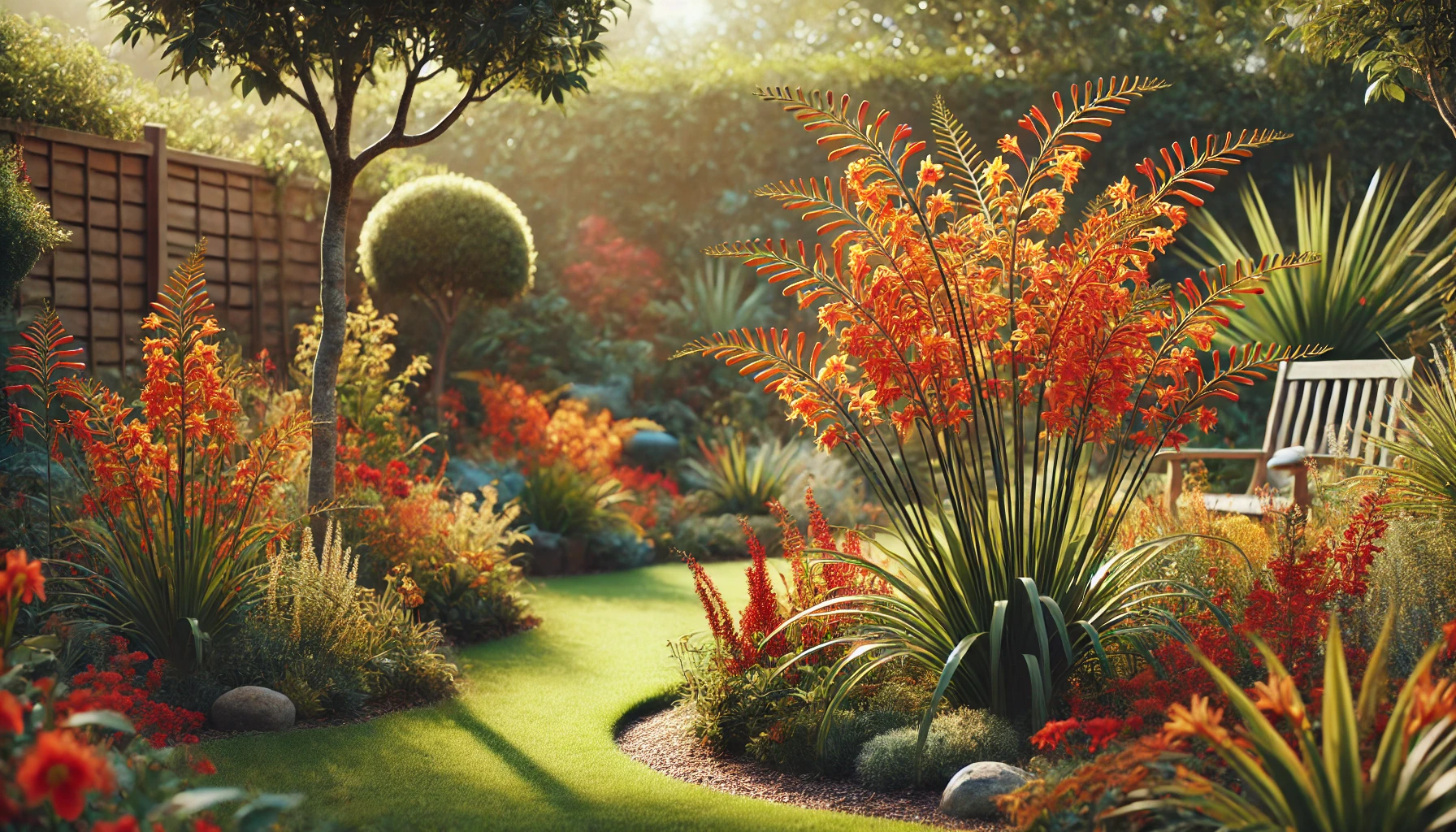
Crocosmia, also known by its formal name Crocosmia crocosmiiflora, is a vibrant and eye-catching plant that adds a burst of color to any garden. With arching stems adorned with flame-colored flowers ranging from orange to red, this perennial plant can grow up to 4 feet tall. It’s not just about its height; Crocosmia spreads quickly, forming clumps that can reach 3 feet wide, making it a standout feature in garden beds.
History and Ideal Growing Conditions
A Brief History
Crocosmia is native to South Africa and was first introduced to Europe in the 19th century. Its name is derived from the Greek words “krokos” (saffron) and “osme” (smell), as its dried flowers give off a faint saffron-like aroma when dipped in water. Over the years, it has become a popular ornamental plant in gardens across the world due to its striking appearance and ease of care.
Ideal Growing Conditions
Crocosmia thrives in full sun but can tolerate partial shade, especially in hotter climates. It prefers well-drained soil that is rich in organic matter. The plant is hardy in USDA zones 5-9, making it adaptable to a range of climates. While it’s relatively low-maintenance, Crocosmia does best when it’s given some protection from strong winds, which can damage its tall stems.
Is Crocosmia Safe for Pets?
Toxicity Information
If you’re a pet owner, it’s essential to know that Crocosmia is not toxic to cats or dogs. This means you can enjoy its beauty without worrying about your furry friends nibbling on it. However, like all plants, it’s still a good idea to discourage pets from chewing on it, as ingestion of any plant material can sometimes lead to mild digestive upset.
Safe Alternatives (If Needed)
Since Crocosmia is safe for pets, there’s no need to seek alternatives. But if you’re looking for more pet-friendly garden plants, consider marigolds or sunflowers, both of which are non-toxic and bring vibrant color to your garden.
Best Practices for Caring for Crocosmia
Watering and Humidity
Crocosmia is drought-tolerant once established but will thrive with regular watering, especially during dry spells. Keep the soil consistently moist but not waterlogged. In areas with high humidity, ensure good air circulation around the plant to prevent fungal diseases.
Soil, Light, and Temperature
Plant Crocosmia in fertile, well-drained soil. It loves sunlight, so choose a spot where it can bask in the sun for at least six hours a day. The ideal temperature range is between 60°F and 75°F, but it can tolerate cooler temperatures, especially with a layer of mulch to protect its roots during winter.
Common Problems and Remedies
Pests and Diseases
Crocosmia is generally resistant to pests and diseases, but aphids and spider mites can occasionally be a problem. Regularly inspect the plant and treat infestations with insecticidal soap or neem oil. Root rot can occur if the soil is too wet, so ensure proper drainage to avoid this issue.
Propagation and Benefits
How to Propagate Crocosmia
Crocosmia is easy to propagate by dividing its corms in the spring or fall. Simply dig up the clumps, separate the corms, and replant them in a new location. This not only gives you more plants but also helps to rejuvenate older clumps that may be losing their vigor.
Benefits of Growing Crocosmia
Apart from its stunning visual appeal, Crocosmia attracts pollinators like bees and hummingbirds to your garden. Its cut flowers also make a long-lasting and colorful addition to floral arrangements. Moreover, its ability to naturalize and spread quickly makes it an excellent choice for filling in gaps in garden borders.
Final Thoughts
Crocosmia is a garden favorite for a reason. With its fiery blooms, easy care, and non-toxic nature, it’s a plant that brings joy to both novice and experienced gardeners. Whether you’re looking to add a splash of color to your garden or create a haven for pollinators, Crocosmia is a top choice. Happy gardening!



